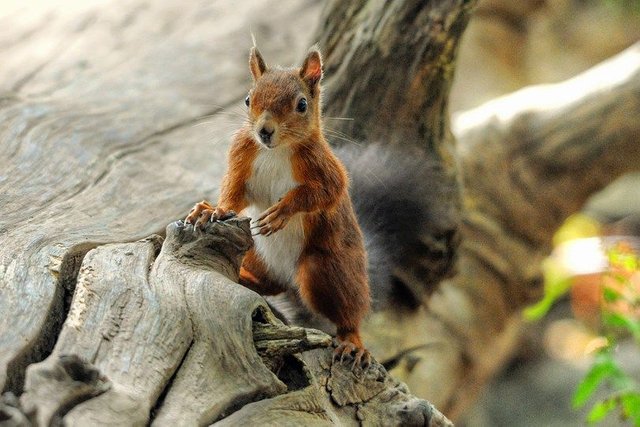Where do animal hibernation and fallen leaves really come from.
Since some animals hibernate in winter and many trees lose their leaves in winter, I guess its easy for us to assume that these behaviors developed in response to the colder, less productive season of the year.
Since some animals hibernate in winter and many trees lose their leaves in winter, I guess its easy for us to assume that these behaviors developed in response to the colder, less productive season of the year.
As I have been delving into a lot on paleoclimates in deep geological time another, also likely, factor raised its head.
Much of what we see around us, in the form of plants and animals living today, only begins to emerge in the time of the Dinosaurs and much later.
The time of the dinos, from a couple of million years ago to about 70 million years ago was very, very, did I say very? different.
For instance there was no grass early on ... Imagine that, mainly conifers and ferns with only flowering plants and some grass making their appearance or becoming dominant only towards the end of the dinos in the Cretaceous Period.
Climate was also extremely different then. The tropics would have been unbearably hot and humid by our standards and there was little or no ice at the poles.
Fossil evidence shows that the poles were heavily forested, the climate there would not require today's polar gear and was incredibly mild by comparison. Plants and animals would have been able to go about their lives at the poles much like they did over the rest of the planet.
There would be one significant difference though, that could not be mitigated by favorable climate and an extremely humid atmosphere.
The poles have perpetual sunlight and daytime in summer and perpetual night in winter.
It would be pretty useless and energy expensive for a tree to maintain its canopy of photosynthesizing leaves through the three or more month long night of the polar winter.
Natural selection would have favored emerging species that conserved energy by shedding their leaves and going dormant during these long dark nights.
Conifers that had emerged long before the flowering plants and deciduous trees were already well selected and "set in their genetic ways" so less likely to evolve in this direction.
But the emerging species would have easily passed these genetic capabilities onto their descendants. Similarly hibernation and other dormancy capabilities would have been favored in animal species and have been passed down.
I think its safe to assume that, hibernation and other forms of low activity or dormancy in both the animal and vegetable kingdom not only evolved in response to lower temperatures and less productive seasons but also the months long cycles of perpetual darkness found at vast periods of the geological past when temperate species emerged, lived and thrived at the poles of the earth.

Very nice article you have there! But do not forget to cite your sources and credit your images when necessary